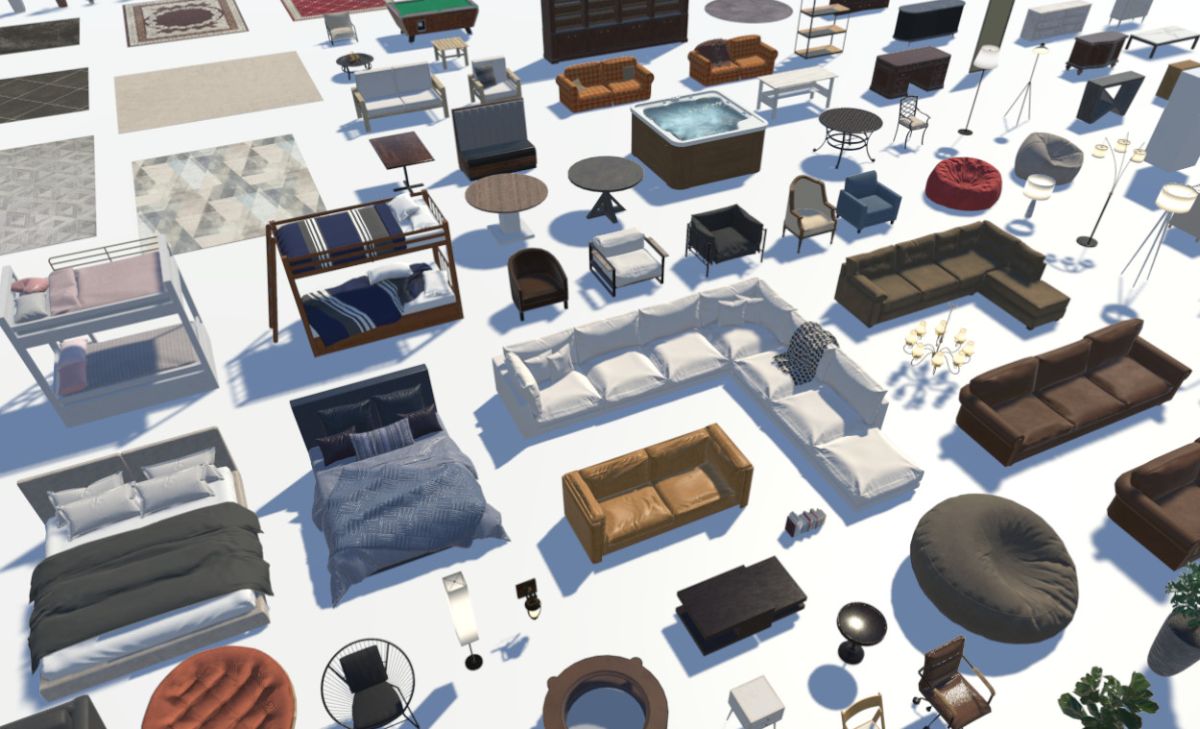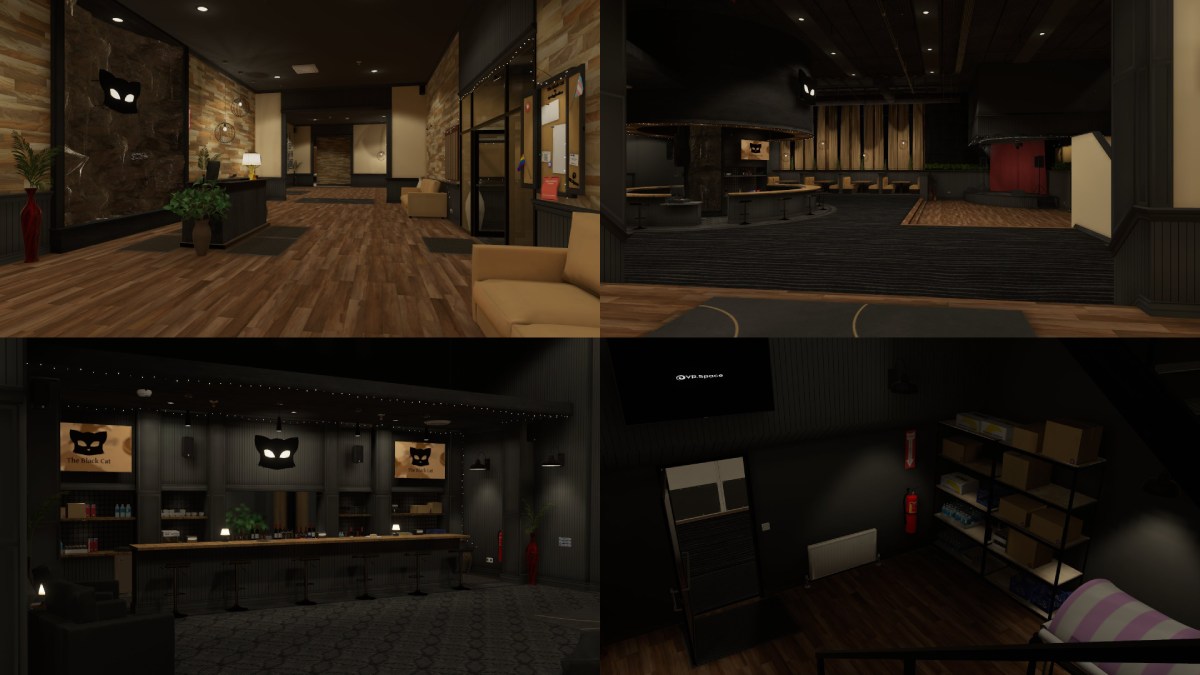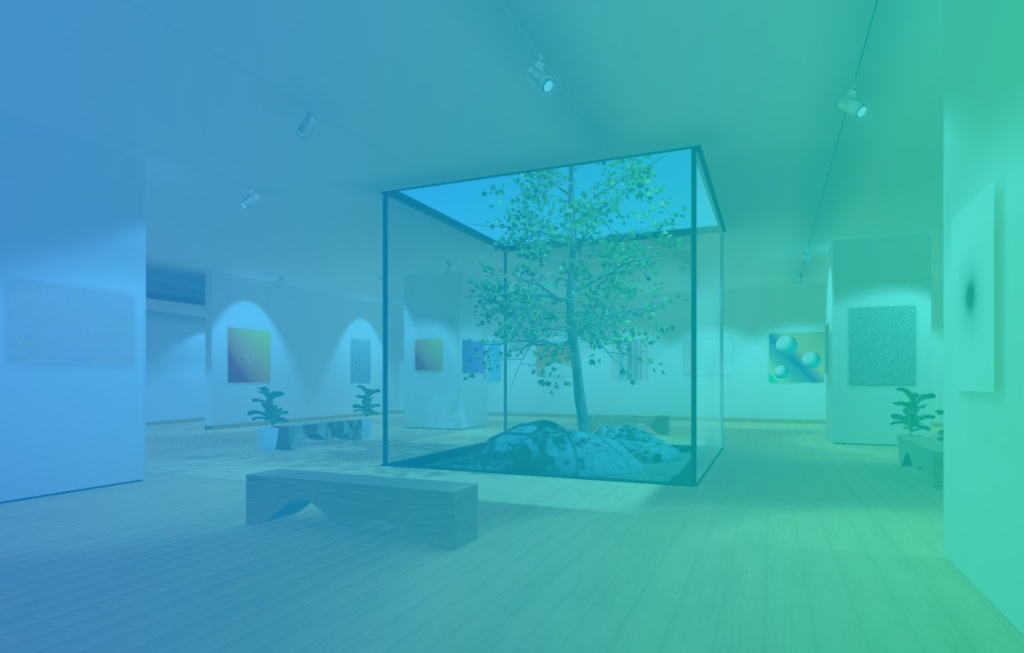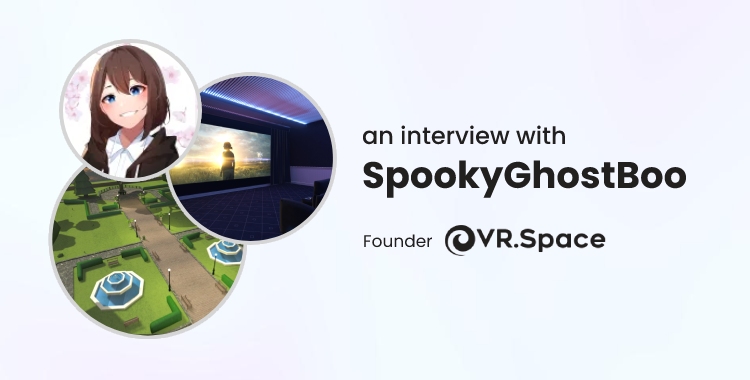SpookyGhostBoo, aka “Elaine Karapetian” IRL, is the founder of VR.Space and has been a pioneer in the creation of some of the industry’s most popular and cherished virtual worlds. SpookyGhostBoo’s virtual space, The Black Cat, has been visited over 55 million times in VRChat and is one of the most popular (and legendary) worlds on the platform. With a vision of revolutionizing communication and connection, SpookyGhostBoo believes virtual spaces break distance barriers and empower a new generation of work, education, entertainment and more.
We’re so excited to share this recent interview with SpookyGhostBoo where we explore the future of the metaverse. So, let’s dive right in!
Can you describe your company and your vision for virtual spaces and the metaverse?
VR.Space is a creative studio focused on building VR environments for VR platforms. I’m fascinated by many platforms and like creating on most of them. It’s exciting to be able to build something and then walk around in it. Some of my favorites are VRChat, Pavlov, and Mozilla Hubs.
I believe virtual spaces will eventually become a huge part of most of our lives. It’s a powerful way for people to connect and communicate, so as the technology gets better, these types of spaces will continue to grow.
How do you see virtual spaces changing the way people interact and collaborate?
It breaks distance barriers. People no longer have to physically travel to hang out with friends. Long distance families can use it to meet and interact. While there is a lot of potential when it comes to businesses, I think it’ll be more powerful for the people who adopt this technology to use it to communicate with friends.
I discovered social VR after I graduated college. Being back home, I didn’t really have any friends. And social VR was able to put me in an environment that allowed me to find new people organically and become really good friends. I feel like this is the real power of Social VR. Connecting people who have never met before.

Modular Prop Pack from VR.Space
How can creators ensure that virtual spaces are accessible and inclusive for a diverse range of users?
I feel like this responsibility falls on the platforms, not the individual creators that build on these platforms. So they can make sure people with disabilities have tools to make it easier to access their platforms. Also they should be quick to ban people who break rules, like harassing or using hate speech. Things like that shouldn’t be tolerated, though on large platforms I understand that it isn’t a simple task to ban those people.
What kinds of business models are emerging in the metaverse, and how is your company adapting to them and innovating?
The biggest one I see is people creating communities around environments or avatars. So the community helps support the creators who allow the community to thrive. I also see subscription based businesses popping up around the metaverse. So like Alakazam which charges a subscription for certain access to their platform. Same thing with MeetinVR. Even I adopted a subscription service to allow users to get access to all my 3D files.
Can you give examples of successful virtual spaces that your company has created and how they have been used by clients?
My most successful space is The Black Cat. It’s been visited over 55 million times. This space uses the community support business model I mentioned above. Many players in the community support the world on Patreon to help fund updates and support me. I also provide posters from the community to allow new users to find other VRChat communities.

Recently Remodeled Black Cat
What challenges do you foresee in the development and growth of the metaverse, and how is your company addressing them?
There seems to be somewhat of a learning curve to VR at the moment. That’s the biggest challenge. Most people won’t be able to get over that learning curve. And because most people won’t do it, finding the people that think doing something in VR is worth the risk, is challenging. Building in VR is game development and game development can be expensive so it’s a big risk for clients. There are a lot of young users on these platforms, so finding clients who want to target them is your best bet. In addition, you can try to jump into the Japanese market, which seems to be way bigger in VR than the US or Europe.
What role do you see virtual spaces playing in the future of work, education, and entertainment?
I think one day it will make more sense to work in VR than on your computer. That day isn’t today, but one day. In VR you can have 10 monitors instead of 1. And if most people are in a VR environment working, anyone can join to talk with you. With education, virtual classes will become more common. I’ve already spent time watching movies with friends in VR. I think just doing stuff virtually will be more common. Not so much that everything will be a VR experience, but that even 2D experiences like traditional video games, or working on an excel sheet, it’ll just be done on virtual screens instead of real ones. XR passthrough will get better so many of us will sit at our desks, put on our VR glasses and just open virtual screens in front of us. There’s a version of this now with the new XR headsets coming out. It’s just not that good yet. So I don’t know when this will all happen, but I think this is where we are going.
What advice would you give to companies looking to explore the potential of virtual spaces and the metaverse?
Be realistic. I’ve talked with companies thinking about creating virtual office spaces and they tend to have a vision that everyone will be working in VR. Maybe one day, but not today, Karen from accounting isn’t going to be able to work in VR. And no one really wants to. It’s faster to meet through Zoom. I say, if you’re using it within your company, use it as a team building tool. If you’re using it to target consumers, make sure you understand the audience that are on these platforms and who will realistically join your experience. A lot of big companies will put things out but they just seem like gimmicks. Stay away from NFTs.
To learn more about SpookyGhostBoo, you can visit the VR.Space website.





